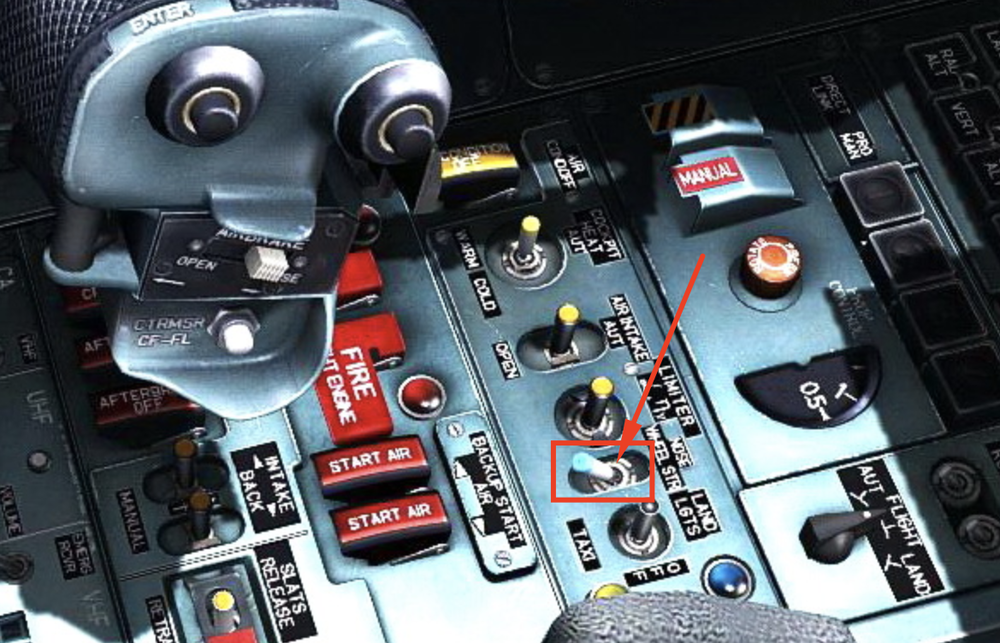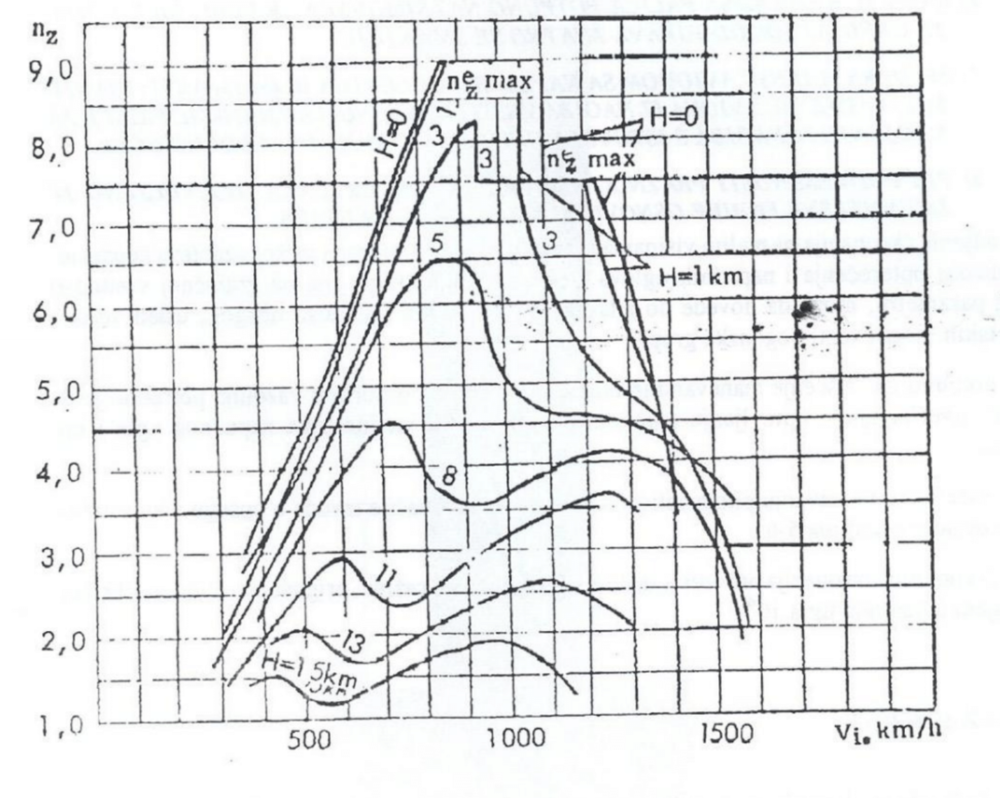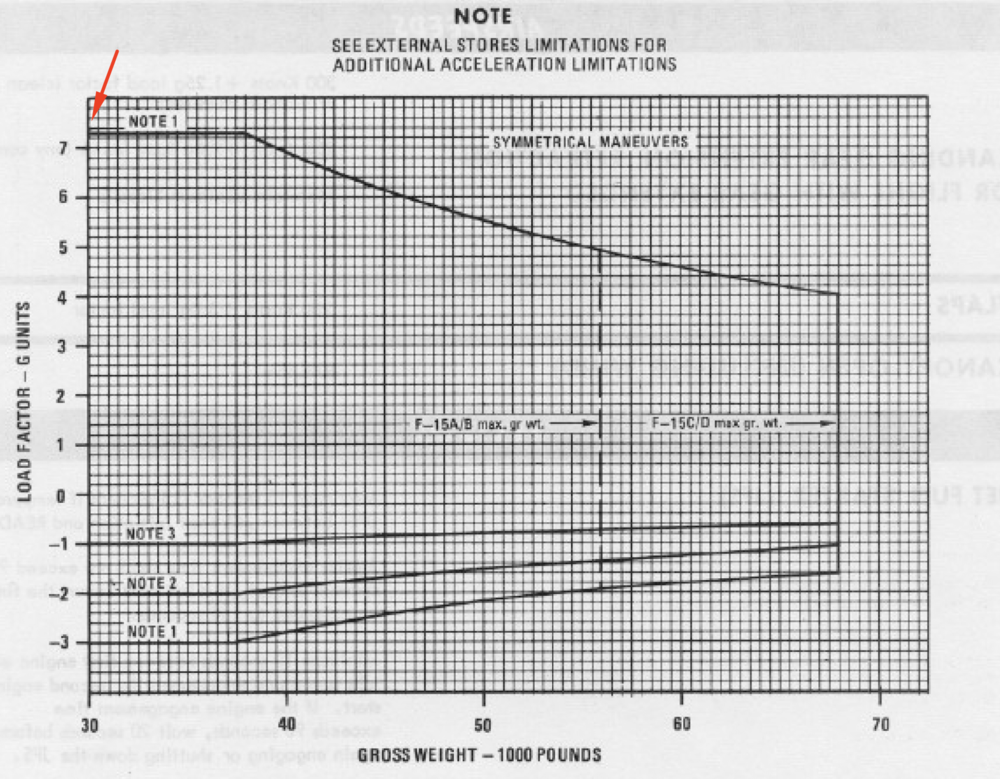-
Posts
835 -
Joined
-
Last visited
Content Type
Profiles
Forums
Events
Everything posted by Cmptohocah
-

investigating Thrust to weight ratio: confused
Cmptohocah replied to bkthunder's topic in MiG-29 for DCS World
For anyone wanting to automate the process, here is JavaScript code: const kphToMs = kph => kph * 0.277778; const acc = (v0, v, t0, t) => (v - v0) / (t - t0); // TEST PARAMETERS const m = 13770; const g = 9.81; // Dynamic wheel friction const tq0 = 0; const tq = 10; const vq = 35; const vq0 = 31.3; const aq = acc(vq0, vq, tq0, tq); const Fq = m * -aq; // Acceleration parameters const t = 159.31; const t0 = 157.25; const v = kphToMs(84); // 84 km/h const v0 = kphToMs(15.6); // 15.6 km/h const a = acc(v0, v, t0, t); const F = m * a - Fq; console.log(`Calculated thrust for aricraft mass of ${m}kg, is ${Math.round(F)}N or around ${Math.round(F/g)}kgf.`); -

investigating Thrust to weight ratio: confused
Cmptohocah replied to bkthunder's topic in MiG-29 for DCS World
I don't have access to DCS at the moment. That's why I asked for TacView That's correct. I took only 2.06s of acceleration since I tried to keep the air resistance at a minimum, ie. ground-speed of less than 100km/h. I recorded the data at 15.6km/h since TacView shows throttles at 100% at that moment. Acceleration was calculated as: a = (v - v0) / ( t - t0) = (23.33 - 4.33) / (159.31 - 157.25) = 19 / 2.06 = 9.223 m/s*s -

investigating Thrust to weight ratio: confused
Cmptohocah replied to bkthunder's topic in MiG-29 for DCS World
I have checked the 104628 TacView file and here are the findings for MiG-29A: m - mass of the aircraft [kg] Fq - dynamic friction force of the landing gear [N] Ft - thrust [N] a - acceleration [m/s*s] t - time [s] v - speed [m/s] m = 13,770kg (assumed correct as provided by @bkthunder - can't verify this) Fq = m * aq aq = (vq - vq0) / tq = - 0.37 Fq = 13,770kg * -0.37 m/s*s = -5094.9N Thrust: Ft + Fq = m * a => Ft = m * a - Fq a = (v - v0) / ( t - t0) t0 = 157.25s t = 159.31s v = 23.33 m/s [84 km/h] v0 = 4.33 m/s [15.6 km/h] a = 9.223 m/s*s Ft = 13,770 kg * 9.223 m/s*s + 5094.9N = 132,232.71 N = 13,479.38 Kgf -

investigating Thrust to weight ratio: confused
Cmptohocah replied to bkthunder's topic in MiG-29 for DCS World
Great stuff! Thank you! I will have a look latter today or tomorrow. -

investigating Thrust to weight ratio: confused
Cmptohocah replied to bkthunder's topic in MiG-29 for DCS World
Your mathematics is spot on. In my humble opinion the following things need to be revised in order to bring the errors to a minimum: - dynamic wheel friction test: make sure you start measuring the deceleration once the engines are completely shut down and spooled down in order to not have any engine thrust effect the friction force calculation. Perhaps you can wait until the aircraft comes to a full stop in order to catch more of deceleration. Yet again, maybe 10 seconds is enough. I wouldn't know. - ground acceleration test: perhaps you can measure the acceleration from 0km/h to 100km/h in order to avoid drag having big impact on the measurement. Make sure you start with the wheels on and AB on, so you have as much thrust as possible when accelerating from 0km/h. Due to wheel brakes not being able to hold the airplane at full AB perhaps the measurement should start at some other value than 0? Perhaps 20km/h? Would be great if you could upload a Tacview of the tests, so I can have a look at it. Great work BTW. -
How would a GCI know where enemy SAMs are?
-

investigating Thrust to weight ratio: confused
Cmptohocah replied to bkthunder's topic in MiG-29 for DCS World
Great stuff. Thanks for verifying that. It means that both thrust produced by the engines and the drag experienced should be correct - at least for the 1000m altitude, that is. Any chance you could try the same thing out at 5km and 8km alt, if you find the time? -

investigating Thrust to weight ratio: confused
Cmptohocah replied to bkthunder's topic in MiG-29 for DCS World
I was having in my mind something similar: Mainly testing the produced trust at sea-level by measuring acceleration from 0 to 100km/h for example. This would give a good measurement of static thrust without too much wind resistance. Only thing that needs to be determined before that is the dynamic friction force produced by the wheels, which can also be measured by rolling the aircraft to a some amount of ground speed and then measuring the time/distance it takes to come to a complete stop with the engines spooled down. Then it would be just a matter of F=ma with a fairly low error which would be produced by drag. Sadly I can't test this yet my self. -

FC3-SU27-Rudders don't work
Cmptohocah replied to Brrrrrty-2020's topic in Flaming Cliffs Bugs & Problems
Su-27 has a switch that controls ground-wheel-steering which basically allows you to make tight corners while taxiing on the ground. I believe the default binding for this is "S" key. please see the post below It's this switch here and it should be "backward" for takeoff/landing and "forward" for taxing: -

investigating Thrust to weight ratio: confused
Cmptohocah replied to bkthunder's topic in MiG-29 for DCS World
Any chance you guys can verify the sustained turn rates I have posted earlier? This can verify correct thrust-to-drag ratio in one go. I don't have access to DCS at the moment -
I can't 'cause I don't really know history of Eagle's engagements. I do know however that in 1999 the two Fulcrums that got shot down were effectively human-operated drones. Not that MiG-29B can put much of a fight against the AMRAAM carrying Eagles anyway, but the Fulcrum drivers had no operating radar, had one RWR that was working, they were blindly following a very questionable GCI command: "Blues are in direction west." (that was the actual radio call which they interpreted as a command and followed), they had no idea that 120's can be fired in TWS... All in all, they never really threatened the F-15C in any serious way. Think of re-crating this in DCS and you will understand why it was not even "relatively equal" - look I used quotes
-
Nothing "relatively equal" there. Most of the Fulkrums in question had no operating radar, some had no operating RWR, poor pilot training, complete GCI mess etc.
-

investigating Thrust to weight ratio: confused
Cmptohocah replied to bkthunder's topic in MiG-29 for DCS World
@bkthunder if you would like to check MiG-29A's trust to drag ratio, you can perform tests for sustained turn rates and compare them to the RL manual. Total mass of the airplane should be 13.000 kg and turns performed with max afterburner (A2A stores play no role). Horizontal axis is indicated airspeed in km/h and the vertical axis in the normal load expressed is Gs. For example: at 5km altitude you should be able to sustain 6.5G at around 860km/h, or at 8km alt 4.5G at around 730km/h. -
Can they pull 12+G without breaking in DCS? The Tomcat and the F-5 I mean. I don't own them, hence the question.
-
In RL it depends on the atmosphere mostly, so you can have one day no contrails and have them the other at same altitude.
-
Nope, you can see that one launched off of a Hornet had no contrails at all until it pierced through the cloud: video #2 Anyway a RL Fulcrum pilot that was fired on with live AMRAAMS in '99, reported contrails also and this is what led him and his wingman to take evasive maneuvers. On that day atmospheric conditions were such that the Slammers were leaving contrails between FL240 and FL270.
-
One could argue that the contrails linger for longer than the smoke, so I guess it's also important for the "smokey" missiles also.
-
I don't know if this was supposed to ridicule or not, but I could not agree more with the code above. BTW, MiG-29B has 9G limit as per the manual - absolute limit that is.
-
Unfortunately this somehow escalated into Red vs Blue or Flanker vs Eagle, which was not intentional. I mention the Flanker only 'cause I have manuals for it - that was the only reason. Anyway the point was that for some reason only the Eagle out of all the contemporary fighters has the ability to create higher G loads in shorter amount of time. Not compered to Flanker only but to all of the flyable fighters. Again I don't have manuals for those, but only for Flanker/Fulcrum. Your question is correct: I was challenging both the faster onset and the effects on it on the pilot. Then I found the video, which I shared, of a pilot sustaining 12G in a centrifuge, so I dropped that argument as it shows to be technically possible. The only question remaining was: why is the Eagle superior in the onset rate to all other fighters? Answer was not satisfactory to me, as there was no documentation reference provided to back this up. Closest explanation was 'cause of the hydraulic system/control flight surfaces combo. I am simply asking for prof of this claim, or any evidence to back this up. Was this onset calculated, simulated taken out of a manual, demonstrated in RL? This is all I am asking. When it comes to comparing structural strength between to fighters: how would this be done? X compred to Y. What would be the reference?
-
Actually no, I don't care about MP Balance per se but I do care about the things you already mentioned. If you check my post on pilot-g tolerance I was the one to point out that F-16's pilot has no higher g-tolerance compared to others even though its cockpit ergonomics is superior to other fighters (reclined seat, static side stick with FBW, etc.). Dunno where would you get that idea, except of course the fact that I fly "Red" fighters exclusively. Or is it my avatar? The manual that the chart was taken out is for F-15 A/B/C/D versions.
-
I couldn't find any AIM-9X launches that are leaving contarils behind and from what I know only smokeless A2A we can fire are the AMRAAM and the 9X, but technically yes all of them are missing contrails.
-
I understand, it was my oversight: so 9G instead of 7.33G.
-
Don't all DCS pilots have same tolerances? I was not aware of the fact. My bad on the weight as I was tired and didn't pay attention. Not sure what "+1 for the Eagle's G-induced DM for the aircraft and stores." means. Well, there you go: that's the cue for me to bug out. Charts mean nothing 'cause there was a RL Eagle that pulled 12+, 13+ and 12+G again and continued. Complete waste of time from my side here as obviously official documentation means nothing. BTW nominaly (by the charts) Flanker has 8G where as Eagle has only 7.33G limit, so I wonder when should the Flanker brake in DCS? Anyway, it's not possible to have an argument when another side ignores facts, which are indisputable. PS. Su internal components are tested 10x their rated G, so if something is rated for 5G, they test it up to 50G. But again, there's a reason why something is rated.
-
-

Does IFF-ing a bandit give away your own stealthiness in any way?
Cmptohocah replied to darkman222's topic in DCS 2.9
Ok this makes sense. So I guess all friendly transponders need to send an answer with uniform latency in order for the distance to be properly calculated. How does this look like from the pilot's perspective? Are the contacts positioned by their radial position? I am trying to visualize it, but can't really manage to do so. What does FCR stand for?






